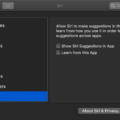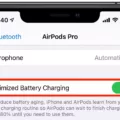In today’s fast-paced digital world, it’s essential to take breaks and give our eyes some much-needed rest. One way to achieve this is by utilizing the screensaver feature on your Mac. Not only does it protect your screen from burn-in, but it also adds a touch of personalization and aesthetic appeal to your device. In this article, we will explore the various options available for customizing and maximizing your MacOS screensaver experience.
To access the screensaver settings on your Mac, simply follow these steps:
1. Click on the Apple menu in the top-left corner of your screen.
2. Select “System Preferences.”
3. In the System Preferences window, click on “Desktop & Screen Saver.”
Upon reaching the “Desktop & Screen Saver” section, you will see a tab labeled “Screen Saver” at the top. Click on it to access a wide range of screensaver options. Now, let’s dive into the exciting world of Mac screensavers.
Choosing a Screensaver:
Once you’re in the screensaver settings, you’ll find a list of pre-installed screensavers on the left-hand side. These include options such as “Flurry,” “Message,” “Shell,” and many more. To preview a screensaver, simply click on its name, and it will appear on the right side of the window. Take your time to explore the various options and find the one that resonates with your style and preferences.
Customizing Screensaver Settings:
Each screensaver comes with its own set of customizable options. To access these settings, click on the “Options” button at the bottom-right corner of the screensaver preview window. The available options will vary depending on the selected screensaver. For instance, you might be able to adjust the speed, size, or color scheme of the screensaver. Take advantage of these settings to create a unique and captivating display.
Setting Up Hot Corners:
MacOS allows you to activate screensavers using hot corners, which are specific locations on your screen that trigger certain actions. To set up hot corners for screensavers, follow these steps:
1. Return to the main System Preferences window.
2. Click on “Mission Control.”
3. In the “Mission Control” tab, click on the “Hot Corners” button located at the bottom-left corner.
A new window will appear, displaying your screen corners and various actions associated with them. To set a hot corner for screensavers, click on the desired corner and select the screensaver option from the dropdown menu. This way, you can activate your screensaver with a simple mouse movement, providing both convenience and efficiency.
Using Live Wallpaper:
If you’re seeking a more dynamic and immersive experience, consider using live wallpapers as your screensaver. Live wallpapers are animated backgrounds that respond to your actions, adding an extra layer of interactivity to your Mac. To access a wide range of live wallpapers, visit the Mac App Store and search for “Live Wallpaper & Screensaver.” Download and install the app, then follow the on-screen instructions to set it up as your screensaver.
Adjusting Screen Timeout:
In addition to screensavers, you may also want to adjust the screen timeout settings on your Mac. By default, the display will turn off after a certain period of inactivity to conserve energy. However, you can customize this timeout according to your preferences. Here’s how:
1. Go to the Apple menu and select “System Preferences.”
2. Click on “Battery.”
3. In the Battery tab, you will find the option to reset the “Turn off display after” duration. Choose a setting that suits your needs, from as little as 1 minute to “Never” if you prefer the display to stay on indefinitely.
By adjusting the screen timeout, you can strike a balance between power-saving and uninterrupted workflow.
MacOS screensavers offer more than just screen protection – they allow you to express your personality, add visual appeal, and enhance your overall user experience. By exploring the various screensaver options and customizing their settings, you can create a unique and captivating display on your Mac. Additionally, integrating hot corners and live wallpapers can further elevate your screensaver experience. Don’t forget to adjust the screen timeout to fit your workflow and energy-saving requirements. So go ahead, dive into the world of MacOS screensavers, and make your display truly your own.

How Do You Get a Screensaver On Your Mac?
To get a screensaver on your Mac, follow these step-by-step instructions:
1. Open the Apple menu by clicking on the Apple logo in the top-left corner of your screen.
2. From the dropdown menu, select “System Preferences” to open the System Preferences window.
3. In the System Preferences window, locate and click on the “Desktop & Screen Saver” option. It is represented by a blue and green desktop icon.
4. Within the “Desktop & Screen Saver” window, you will see a row of tabs on the top. Click on the “Screen Saver” tab.
5. On the left-hand side of the Screen Saver tab, you will find a list of available screensavers. Click on the thumbnail of the screensaver you want to use.
6. Once you have selected a screensaver, you can further customize its settings by clicking on the “Options” button located towards the bottom right of the window.
7. The options available will depend on the screensaver you selected. Some common settings include adjusting the speed, choosing different image collections, or enabling password protection when the screensaver activates.
8. After customizing the screensaver settings to your preference, click on the “OK” button to save your changes.
9. Close the System Preferences window.
Congratulations! You have successfully set up a screensaver on your Mac. Your new screensaver will activate after the specified idle time or by manually triggering it using hot corners or keyboard shortcuts, depending on your settings. Enjoy the visual delight whenever your Mac is idle!
Can You Download More Screensavers For Mac?
It is possible to download more screensavers for Mac. To do so, follow these steps:
1. Open the “System Preferences” by clicking on the Apple menu in the top-left corner of your screen and selecting “System Preferences.”
2. In the System Preferences window, click on the “Desktop & Screen Saver” icon. This will open the Desktop & Screen Saver settings.
3. In the Desktop & Screen Saver settings, click on the “Screen Saver” tab.
4. On the left column of the Screen Saver tab, you will see a list of available screensavers. These are the default screensavers that come with your Mac.
5. To download more screensavers, click on the “App Store” button located at the bottom left corner of the Screen Saver tab. This will open the App Store app on your Mac.
6. In the App Store, you can search for screensavers by typing “screensaver” in the search bar located at the top-right corner of the window.
7. Browse through the search results and click on the screensaver you want to download. This will open the screensaver’s page in the App Store.
8. On the screensaver’s page, click on the “Get” or “Buy” button to download or purchase the screensaver, respectively. If it’s a free screensaver, you will simply need to click on the “Get” button.
9. Once the screensaver is downloaded, it will automatically appear in the left column of the Screen Saver tab in the System Preferences.
10. To activate the newly downloaded screensaver, simply click on its name in the left column. You can also adjust the settings for the screensaver, such as the time it takes to start, by using the options on the right side of the Screen Saver tab.
You can expand your collection of screensavers on your Mac by downloading them from the App Store. Simply open System Preferences, go to the Desktop & Screen Saver settings, click on the Screen Saver tab, and then click on the App Store button to browse and download new screensavers.
How Do You Change How Long Your Mac Screen Stays On?
To change the duration for which your Mac screen stays on before it goes to sleep or turns off, you can follow these steps:
1. Click on the Apple menu in the top-left corner of your screen and select “System Preferences.”
2. In the System Preferences window, click on the “Energy Saver” icon.
3. You will see two tabs at the top of the Energy Saver window – “Battery” and “Power Adapter.” If you’re using a laptop, make sure you are on the “Battery” tab.
4. On the Battery tab, you will find a slider labeled “Turn display off after.” This slider allows you to set the duration for how long your Mac’s screen will stay on before it turns off or goes to sleep.
5. Move the slider to the desired time interval. You can choose options ranging from 1 minute to “Never,” depending on your preference. Moving the slider towards the left will decrease the screen timeout duration, while moving it towards the right will increase it.
6. Once you have set the desired screen timeout duration, you can close the Energy Saver window. Your changes will be automatically saved.
By adjusting the “Turn display off after” slider in the Energy Saver preferences, you can customize the duration for which your Mac screen stays on before it goes to sleep or turns off.
Conclusion
Using a screen saver on your macOS device offers both practical and aesthetic benefits. By activating a screen saver, you can protect your screen from burn-in and prolong its lifespan. Additionally, screen savers can provide an enjoyable visual experience when your computer is idle.
To set up a screen saver on your Mac, simply go to the System Preferences menu, click on the Screen Saver option, and choose from a variety of pre-installed screen savers. Each screen saver offers different customization options, allowing you to adjust its settings according to your preferences.
Furthermore, if you want to add more variety to your screen saver collection, you can visit the Mac App Store and explore a wide range of live wallpapers and screensavers available for download. This gives you the opportunity to personalize your screen saver with stunning visuals and animations.
In terms of managing the screen timeout on your Mac, you can easily adjust this setting in the System Preferences menu. By going to the Battery tab and modifying the “Turn off display after” option, you can customize the length of time it takes for your screen to go to sleep when idle.
Utilizing a screen saver and managing the screen timeout on your Mac can enhance both the functionality and aesthetics of your device. Whether you prefer a simple screensaver or a visually captivating one, macOS provides numerous options to cater to your personal taste and needs.








